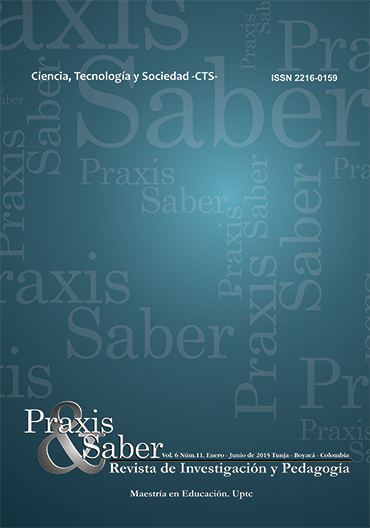Web site as a strategy in the education for sustainability

Abstract
In this paper the theoretical and methodological aspects in creating learning environments through the design and the implementation of a website to support research processes conducted in the school vegetable garden are presented. The methodological design was framed in the participatory action research with education and teaching strategies based on the use of information and communication technology (ICT), generating along with children and parents, learning environments that are constitute as tools in teaching education for sustainability.Keywords
website, teaching strategy, education for sustainability
References
- ANDER, E. (2003). Métodos y Técnicas de Investigación Social: Técnicas para recogida de datos e información [1ª ed.] Buenos Aires: Lumen.
- ANTEZANA, L. (2003). ‘Mis primeros trazos infantiles: una aproximación al inconsciente’. Revista electrónica Comunicación y Medios [(14)]. Recuperado el 23 de febrero de 2014 de http://wwwicei.uchile.cl/comunicacionymedios/14lantezanahtml
- BLÁSQUEZ, F. & Lucero, M. (2002). Los medios y los recursos en el procesodidáctico. MEDINA, A & SALVADOR, F. Didáctica General [185-218]. Madrid, Pearson Educación.
- BUSÓN, C. & Osuna Acedo, S. (2008). La integracion tecnológica en la era digital. Barcelona: Icaria Editorial.
- CAJAS, F. (2001). ‘La transposición didáctica del conocimiento tecnológico’. Revista enseñanza de las ciencias. Alfabetización científica y tecnológica.Washington D.C.: Association for the Advancement of Science (AAAS).
- COATEN, N. (2003). ‘Blended e-learning’. Educaweb [69] Recuperado el 30 de mayo de 2014 de http://www.educaweb.com/esp/servicios/
- monografico/formacionvirtual/1181076.asp
- COLLEGE, B. (2001). Trends in College Pricing 2001. Washington, D.C.
- DÁVILA, D. (2012). El trabajo cooperativo en la educación para la sostenibilidad. Una experiencia en Básica Primaria. Madrid: Editorial Académica Española.
- HANSON, N. R. (1977). Patrones de descubrimiento. Observación y explicación. Madrid: Alianza.
- JIMÉNEZ, T. (1992). Alfabetizar, guía: módulo 6. Materiales didácticos. Madrid: Ministerio de Educación y Ciencia.
- LATORRE, A. (2007). La investigación- acción. Conocer y cambiar la práctica educativa. Barcelona, España: Grao.
- MARSH, G. E; MCFADDEN, A. C. & PRICE, B. (2003). ‘Blended
- Instruction: Adapting Conventional Instruction for Large Classes’.
- Online Journal of Distance Learning Administration [VI (IV)]. Recuperado el 24 de abril de 2014 de http://www.westga.edu/~distance/ojdla/winter64/marsh64.htm
- MARTÍNEZ, M. (2009). Ciencia y arte en la metodología cualitativa. México:Trillas.
- MEDINA, A. (2009). ‘Metodología didáctica para el desarrollo de planes
- de estudio en el EEES’. MEDINA, A.; SEVILLANO M. L. & DE
- LA TORRE S. [coord.] Una universidad para el siglo XXI. Una mirada
- transdisciplinar, ecoformadora e intercultural [195-212]. Madrid: Universites.
Downloads
Download data is not yet available.